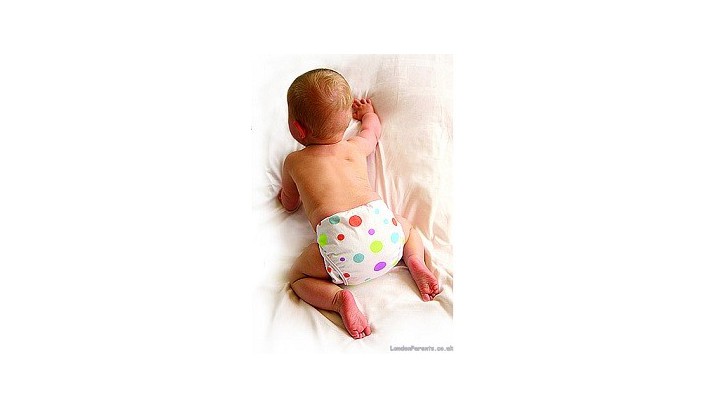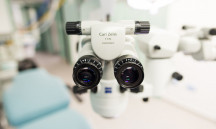Choosing nappies: washable vs disposable
Author: Charissa
12:23, 26 March 2013
926
0
0

Washable nappies - also known as reusable nappies, cloth nappies or
real nappies - have evolved significantly in the past decade and are a
popular choice for eco-conscious parents.
Reusable nappies come in
a vast range of colours and fabrics. They often look like disposables
and can be just as easy to put on and take off again.
Modern
reusable nappies don't require soaking and can be washed in the washing
machine at home, or picked up by a nappy laundry service.
Washable nappies: the pros
Price: reusable nappies work out cheaper than disposables (especially if you use traditional terry nappies rather than the modern, fitted-style equivalent). You'll be paying more initially, but the costs will be lower overall. The Go Real nappy information service estimates it costs between £50 and £270 to kit out your baby with a basic set of reusable nappies (depending on the type of nappy you choose) plus around £1 a week to wash them - saving you around £500 compared with the market-leading disposable nappy. Savings will be even greater if the nappies are used for a second child.
Incentive schemes: many councils offer real nappy incentives in the form of cashback, free samples or vouchers, giving you the chance to try washable nappies for a discounted price, or free of charge. Contact your local authority for details of a scheme near you.
Longevity: you can use washable nappies again for subsequent children. Most are designed for at least two babies.
Waste: using reusable nappies reduces the amount of waste going to landfill.
Washable nappies: the cons
Convenience: the main disadvantage with reusable nappies is that you have to wash them.
Energy use: cleaning and drying reusable nappies can potentially use lots of energy and water – see our environmental impact page for top tips on how to minimise your energy and water use.
Absorbency: reusable nappies can be less absorbent than disposable nappies, so you may need to change them more often. However, many types have a removable inner layer so you don't have to wash the whole nappy each time.
There are several types of washable nappy to choose from.
The cheapest option is to use flat cotton terry toweling squares that you fold yourself and fasten using safety pins or plastic nappy grips. You'll need a separate waterproof cover to put over the top, but this won't need changing each time.
Shaped fabric nappies require no folding and stay fastened with poppers or Velcro. These come in a variety of fabrics and colours. You'll need a separate waterproof cover to put over the top, but this won't need changing each time.
All-in-one nappies are shaped to fit your baby and have a waterproof outer layer. They stay fastened with poppers, Velcro or are pull-on. The whole nappy needs to be washed each time and they can take longer to dry than other reusable nappies.
Pocket nappies are similar to all-in-ones, but you can easily separate the nappy lining and waterproof cover when washing and drying. They're convenient, but can work out more expensive than other types of washable nappy.
Disposable nappies are convenient but expensive, and many people have concerns about the number of nappies that end up in landfill sites.
Approximately eight billion nappies enter the waste stream every year in the UK, and most end up in landfill sites where parts of each nappy will take 200 years or more to decompose.
Disposable nappies: the pros
Convenience: disposables are very convenient as you just throw them away after use. They're easy to buy, too – leading brands such as Huggies or Pampers can be picked up in any supermarket. They're slim and light, so you can easily carry several around with you when you're out and about, and they don't contribute to your washing.
Absorbency: modern disposable nappies contain a highly absorbent material called polyacrylates. This is trapped inside the nappy layers and can absorb many times its own weight in liquid. When the polyacrylate gets wet it turns into a gel, holding in the wetness in the process.
Energy use: although they have a significant adverse effect on landfill sites, disposable nappies don't use energy through repeated washing, and drying, like reusable nappies do.
Disposable nappies: the cons
Cost: a major disadvantage of disposable nappies is the cost. During the first few months you can expect to be changing a nappy about six times a day, which is roughly 40 a week, or 160 per month. Even though the cost of each individual nappy is low, it mounts up over time. A 2006 study by the Women's Environmental Network found that using disposable nappies instead of reusables could cost families around £500 more per child.
Waste: if you opt for disposable nappies – as most parents do – you'll be buying them for two-and-a-half to three years from the birth of your baby. During this time you'll throw away an average of 4,000-6,000 disposable nappies, which will contribute significantly to landfill.
Five ways to cut the cost of disposable nappies
1. Buy the largest packs to reduce costs but be wary of bulk-buying too much in one size (especially newborn-size) as your baby may outgrow them sooner than you expect.
2. Take advantage of special offers if you don’t have a strong loyalty to one particular brand. Such is the competition between nappy manufacturers that offers are often available.
3. Supermarkets and shops selling a range of nappy brands often make it easier for you to compare prices between brands by displaying the price per nappy alongside the pack price.
4. You can save money by buying a cheaper brand of nappy for daytime use and a super-absorbent one for night-time when your baby will be wearing the nappy for longer.
5. Look out for free nappies and money-off nappy vouchers through baby clubs





